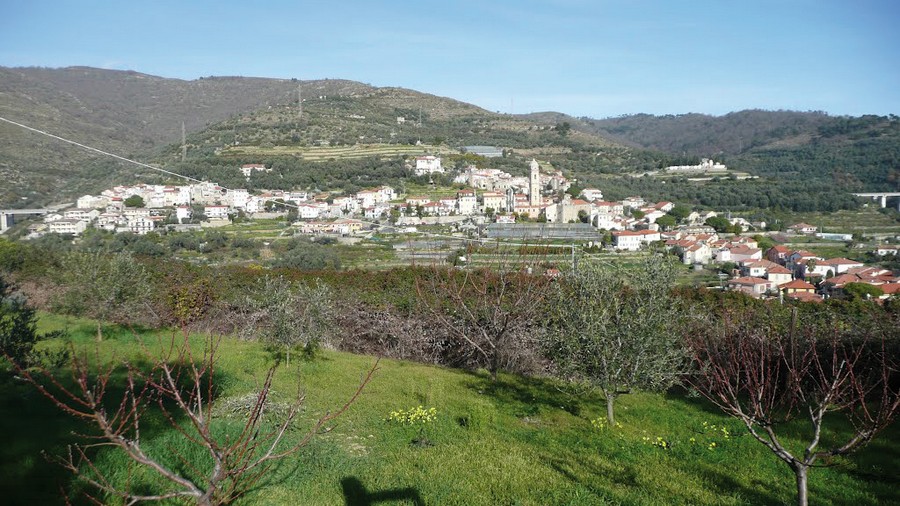Altitude: 200 m a.s.l.
Area: 5.39 sq km
Distance from Imperia: km 18
Inhabitants:
- in 1881 907
- in 2017 816
Patron Saint Day: July 22nd - Santa Maria Maddalena
Information: Municipality tel. 0184 486777/8
From Riva Ligure at the traffic light take the detour that goes up to the inhabited area of Pompeiana, which you will cross before parking.
Visit of the town
After parking, reach the church of Assunta, of Romanesque origin but rebuilt in Baroque style at the end of the seventeenth century.
Of the original structure now remain the narrow single lancet window and the ogival arch stone portal on the right side, and inside the eight stone columns linked by round arches that divide the church into three naves; in the church is preserved a marble stoup of 1698.
Next to the church stands the Baroque oratory of the Maddalenanti of 1712, decorated inside by a high wide cornice of Baroque stuccoes.
The churchyard offers a panoramic view over the whole valley, where the tower that you will later visit is clearly visible in front of you.
A short tour of the village can be done by climbing the ramp beyond the road upstream of the church under the arches of Via San Biagio and then taking the right, under the vault with an aedicule of 1810; from there go left on the concrete steps up to the loggia with arches, then returning by the same way.
On the way back, you’ll see in the attic of the church the writing "Fortified and repaired of the damages of the earthquake of 23 February 1887"; the quake made five victims here.
Taking the descent under the church, you’ll find nothing else of interest except a marble bas-relief of 1882 under the arch at number 15.
Back to the car, continue westwards, thus reaching the town of Barbarasa where you can park on the left under the pine trees.
To your right, incorporated between the houses, is the anti-Saracen quadrangular tower; after climbing the ramp paved in the center with bricks, pass under the vault and once you reach the fountain take the right, thus arriving under the fort, now used as a dwelling, which preserves the small quadrangular slits and the crown drains.
Go all the way back and, passing the baroque oratory of Sant'Antonio da Padova of 1854, return to the car.
Driving back, at the widening which opens three hundred meters after the church, turn right and continue keeping the right until the end of the climb; here turn left to go and park three hundred meters further, near the octagonal chapel of San Giuseppe surrounded by ruins, from which you can reach the Torre dei Panei in a hundred meters on foot.
The sixteenth-century fortification, which underwent the assault by Ulugh Ali in 1563, has a circular plan on two floors and preserves at the top the shelves of the machicolations that have now disappeared.
The stone staircase that leads to the entrance door has been built in a later period: originally the access to the tower was controlled by a wooden drawbridge, which could be lifted with chains passing through the two narrow vertical openings that open into the wall above the door.
From here you can return to the Aurelia on the road already traveled on the outward journey and head towards Castellaro.


